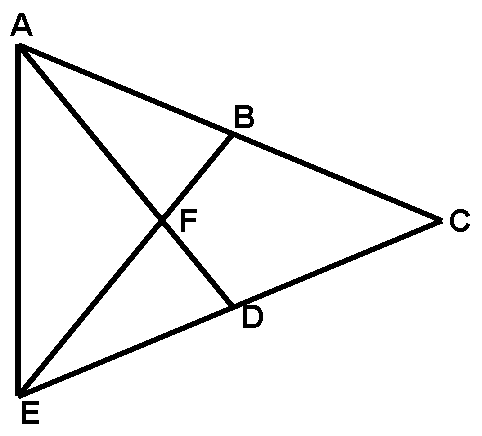
|
Geometry / Mr. Hansen |
Name: __________________________ |

|
Given: |
Ð
BAD @
Ð
FED |
|
Prove: |
D BFD is isosceles |
The following proof was given by a student in class but contains a small error. Can you find the mistake? (Answer is at bottom of page. Donít peek until you have thought about the problem seriously. You can really learn something from this proof!)
|
INCORRECT PROOF |
|
|
CORRECT PROOF |
|